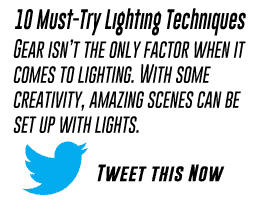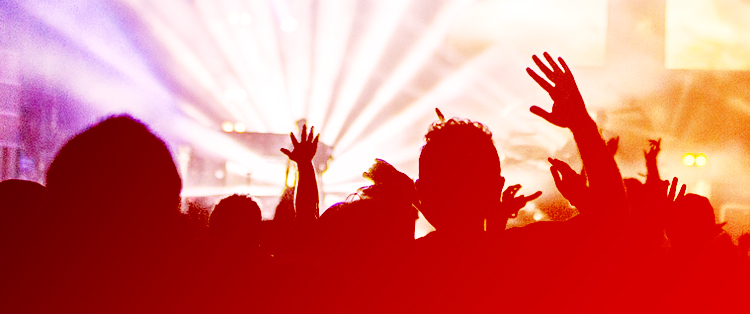As more and more churches begin to lean in a more modern direction with updated sound systems, HD video projectors, and camera equipment; one vital piece of the puzzle can be easily overlooked: lighting. Lighting has been used on professional stages for decades. What used to only be found at a music festival or broadway play is now easily accessible and affordable for churches to begin utilizing. But gear isn’t the only thing to think about in the lighting world, with a big dose of creativity and a little direction some amazing scenes can be set with lights. Here are ten techniques that will completely change the atmosphere of your worship service:
10 Must-Try Lighting Techniques for Your Worship Session
1. Front Light
Front light will always be necessary for preaching and for film. The proper technique for front light is to use three angles: one light at forty-five degrees to the right of the subject, one light at forty-five degrees to the left, and one light directly in front of the subject. Hanging your lights in these positions will help to decrease shadows and increase light consistency regardless of the direction your subject is facing.
2. Back Light
Backlighting has become very popular lately. Backlighting can be used for two main purposes: creating depth on your subject, or silhouette. Silhouetting is often used at dramatic points in service to create an ethereal atmosphere. It’s important to note that when designing a lighting plot to consider not only where the light will shine, but what shadow will be created because of that light.
3. Depth
Backlighting is one way to create depth on a subject, but depth can also be portrayed on a stage as well. When dealing with cameras of any kind depth is important because it can be easy for images to run together. For instance; if you only front light a man with black hair on a black background, cameras will often pick up that subject as having no hair. On the stage, it can often appear as though musicians are standing in a black hole. By adding a few low-intensity lights in the background, it defines the boundaries of the stage.
4. Down Light
Uplighting and downlighting are often effects used similarly to backlighting and create a type of silhouette that has a different feel. A single downlight on a subject draws the audience attention directly to your subject and is often used in openings of songs as a starting point. When paired with a narrow front light, the subject almost appears to be on stage all alone.
5. Beam Angle
Beam angle refers to the amount of spread a light has on a subject. All lights have a beam angle rating on them. Smaller angles mean that the light will throw a smaller circle of light on the stage. Beam angles of ten degrees are often so narrow they are only used for effects. Lights with a twenty-four-degree beam angle or less are used to highlight a single person on stage. Everything above thirty-six degrees usually falls into the “flood” category and is used to light the whole stage (depending on how far your light is from the stage, of course).
6. Reflection
Reflection is a powerful tool that will make it appear that you’re using more lights than you actually are. By painting things white on stage, they will reflect any color clearly. A common technique is to paint a background white and uplight it with come LED strips. By only using four or five lights you can control the color of the entire background of the stage.
7. Color
Traditionally if a church had lights it was more for function than fashion. With the advances in LED technology, it is so easy change feel of a set with the press of a button. One light replaces what we used need several for. Don’t be afraid to experiment with color theory and get a little funky in designing your worship service.
8. Haze
One of the coolest uses of color is when its paired with haze. Haze has gotten a bad wrap because most people that use it, abuse it. Personally, I think the hazer should not be running during the whole worship service. An enormous cloud billowing from backstage just frightens people. Instead, run the hazer during practice and use fans to help control where the haze goes. Good haze should last fifteen to twenty minutes if it’s properly controlled. If you must add haze, do it subtly and be sure a strong fan is helping to dissipate it quickly.
9. Moving Lights
Moving lights can add amazing effects to your worship service. Whether they are flowing with the song or static throughout the set, dramatic scenes can be set. Lately, even the cost of moving lights has dropped to fit realistically into a church lighting budget. Unless you’re a DJ I wouldn’t recommend using them in automatic mode, which means you’ll need the proper controller and a tech who knows how to operate them. The good news is, once ten to fifteen scenes are programmed, a tech can usually operate them on the fly.
10. Ambiance
Lights can be used throughout the entire auditorium to help create ambiance. Spacing out lights and uplighting the walls creates a column effect. Using gobos all across the stage creates a textured effect. Even just adjusting the amount of house light during a service will change the ambiance. It’s for this reason that when we switch between the music and preaching parts of our service that the house lights are slowly added, so we aren’t jarring people by transitioning.
Ultimately everything we do with lights controls the atmosphere in the room. It’s important to be aware of where the band is going and anticipate how the crowd is going to react. What are some of your lighting techniques?

